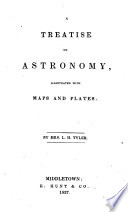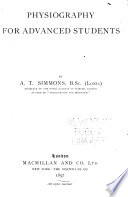 | Almanacs, English - 1817 - 494 pages
...therefore, much less than the least of the preceding numbers ; and, consequently, if the Moon moved always in the plane of the ecliptic, she would pass through the Earth's .shadow in each of her revolutions. The length of the conical shadow, projected behind the Moon, may also be... | |
 | G. Rubie - Astronomy - 1830 - 204 pages
...conceived by supposing the Moon to move in its orbit from p through M to a. If the Moon always moved in the plane of the Ecliptic, she would pass through the Earth's shadow and be eclipsed at every full ; but it has already been observed (page 146.) that she is mostly seen above or below the Ecliptic:... | |
 | Mrs. L. H. Tyler - Astronomy - 1837 - 302 pages
...shadow than that of the moon 1 At the mean distance of the latter, what would be the conseqence of this, if the moon revolved around the earth in the plane of the ecliptic? Why will the moon become ' invisible when it pastes through the earth's shadow ? the ecliptic, it would... | |
 | Joseph Allen Galbraith - 1855 - 186 pages
...of the Suns or 1 80° distant in longitude from the Sun. If the Moon performed her revolution round the Earth in the plane of the ecliptic, she would pass through the Earth's shadow once each month when in opposition, and be eclipsed ; but as her true orbit is inclined 5° 8' 48"... | |
 | John Brocklesby - Astronomy - 1855 - 394 pages
...extended in the direction of the latter. 344. If the plane of the moon's' orbit coincided exactly with the plane of the ecliptic, she would pass through the earth's shadow at every revolution, and a lunar eclipse would take place at every full moon. But as the former is... | |
 | Arthur Thomas Simmons - Geomorphology - 1897 - 516 pages
...the nodes of its orbit ; and a maximum effect is produced when the moon is midway between the nodes. If the moon revolved around the earth in the plane of the equator, it would have no influence in producing precession. And if it revolved in the plane of the... | |
 | Edward Singleton Holden - Astronomy - 1899 - 484 pages
...the light of the Sun can reach her surface and she is said to be eclipsed. If the Moon moved exactly in the plane of the ecliptic she would pass through the Earth's shadow-cone at every full Moon (for it is at full Moon that the Sun and Moon are on opposite sides... | |
| |